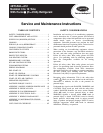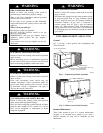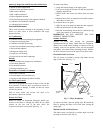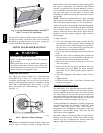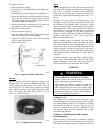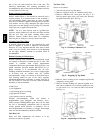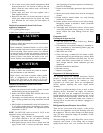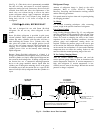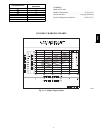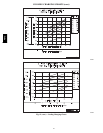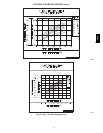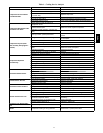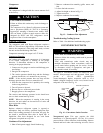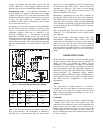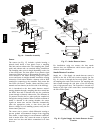
6
life of the coil and extend the life of the unit. The
following maintenance and cleaning procedures are
recommended as part of the routine maintenance activities
to extend the life of the coil.
Remove Surface Loaded
Fibers
Surface loaded fibers or dirt should be removed with a
vacuum cleaner. If a vacuum cleaner is not available, a
soft non--metallic bristle brush may be used. In either
case, the tool should be applied in the direction of the fins.
Coil surfaces can be easily damaged (fin edges can be
easily bent over and damage to the coating of a protected
coil) if the tool is applied across the fins.
NOTE: Use of a water stream, such as a garden hose,
against a surface loaded coil will drive the fibers and dirt
into the coil. This will make cleaning efforts more
difficult. Surface loaded fibers must be completely
removed prior to using low velocity clean water rinse.
Periodic Clean Water
Rinse
A periodic clean water rinse is very beneficial for coils
that are applied in coastal or industrial environments.
However, it is very important that the water rinse is made
with a very low velocity water stream to avoid damaging
the fin edges. Monthly cleaning as described below is
recommended.
Routine Cleaning of Coil
Surfaces
Periodic cleaning with TotalineR environmentally sound
coil cleaner is essential to extend the life of coils. This
cleaner is available from Carrier Replacement
Components Division as part number P902--0301 for a one
gallon container, and part number P902--0305 for a 5
gallon container. It is recommended that all coils,
including standard aluminum, pre--coated, copper/copper
or E--coated coils be cleaned with the Totaline
environmentally sound coil cleaner as described below.
Coil cleaning should be part of the unit’s regularly
scheduled maintenance procedures to ensure long life of
the coil. Failure to clean the coils may result in reduced
durability in the environment.
Avoid use of:
S coil brighteners
S acid cleaning prior to painting
S high pressure washers
S poor quality water for cleaning
Totaline environmentally sound coil cleaner is
nonflammable, hypo allergenic, non bacterial, and a
USDA accepted biodegradable agent that will not harm
the coil or surrounding components such as electrical
wiring, painted metal surfaces, or insulation. Use of
non--recommended coil cleaners is strongly discouraged
since coil and unit durability could be affected.
One--Row Coil
Wash coil with commercial coil cleaner. It is not
necessary to remove top panel.
Two--Row Coils
Clean coil as follows:
1. Turn off unit power, tag disconnect.
2. Remove top panel screws on condenser end of unit.
3. Remove condenser coil corner post. See Fig. 8. To
hold top panel open, place coil corner post between
top panel and center post. See Fig. 9.
C08205
Fig. 8 -- Cleaning Condenser Coil
C08206
Fig. 9 -- Propping Up Top Panel
4. Remove screws securing coil to compressor plate and
compressor access panel.
5. Remove fastener holding coil sections together at re-
turn end of condenser coil. Carefully separate the out-
er coil section 3 to 4 in. from the inner coil section.
See Fig. 10.
C08207
Fig. 10 -- Separating Coil Sections
48TC



